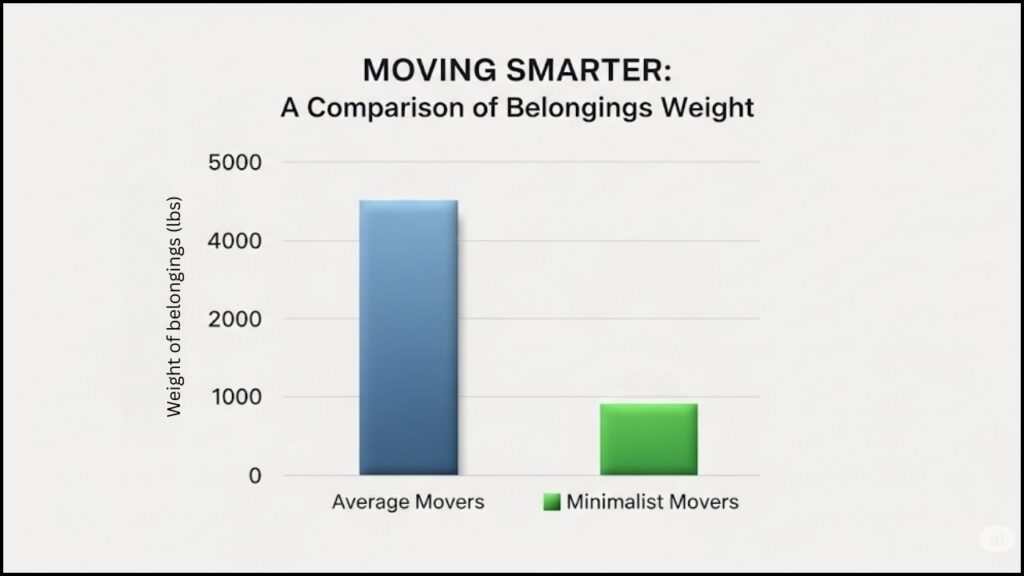Moving can be a costly, time-consuming, and stressful process. For many, it involves simply packing all belongings into boxes and transporting them to a new location. However, a growing number of individuals are adopting a minimalist moving strategy. This approach, centered on intentionality and decluttering, aims to reduce the volume of possessions, streamline the packing process, and ensure a more organized home from the moment a person walks through the door. This method is gaining traction as a way to mitigate the financial and logistical burdens of moving.

The Philosophy of Less: Six Steps to a Streamlined Move
The principles of minimalism, which advocate for living with less to focus on what is truly important, translate directly into the moving process. Rather than being a chore, a move becomes an opportunity for a major reset. According to an article from The New York Times, Americans generate an average of 4.4 pounds of waste per person per day, a figure that often spikes during a move. A minimalist approach can significantly reduce this environmental impact and the personal stress associated with it.
1. The Pre-Packing Purge: A Three-Category System
Before a single box is taped shut, minimalists begin with a comprehensive purge. This initial phase involves sorting every item in the home into three distinct categories: keep, donate/sell, and discard. This process is systematic, often starting with one room or even one drawer at a time to avoid becoming overwhelmed. Marie Kondo, a Japanese organizing consultant and author, has popularized this approach with her method of only keeping items that “spark joy.” This sentiment-based sorting provides a clear decision-making framework, a concept that resonates with those seeking a deeper connection to their belongings.
2. Digitizing Documents and Media
Physical clutter is not limited to objects; it also includes stacks of paper, photo albums, and CDs. A key part of a minimalist moving strategy is to digitize these items. Financial statements, manuals, and important documents can be scanned and saved to a cloud-based service or an external hard drive. Photographs can be digitized and stored, while physical media like DVDs and music CDs are often sold or given away, as streaming services have made them largely redundant. According to the Consumer Technology Association, the number of households using at least one video streaming service has been steadily increasing since 2017, reducing the need for physical media. This step not only lightens the moving load but also creates a more accessible and organized digital library.

3. Strategic Packing: Categorizing by Room and Priority
Unlike conventional packing, which can be chaotic, a minimalist approach is highly strategic. Items are packed by room, and boxes are meticulously labeled with both the contents and the intended room in the new house. Furthermore, a “first night” box is prepared. This essential box contains critical items needed immediately upon arrival, such as toiletries, medications, phone chargers, a change of clothes, and basic cleaning supplies. This simple yet effective step eliminates the frantic search for essentials in a sea of boxes on moving day.
4. The “One In, One Out” Rule for New Purchases
The period leading up to a move often involves buying new items for the new home. Minimalists adhere to a strict “one in, one out” rule. For every new purchase, an existing item of a similar nature is either discarded, donated, or sold. This principle, also known as replacement purchasing, prevents the accumulation of new possessions and maintains the integrity of the decluttering process. It encourages thoughtful consumption and ensures that the total volume of belongings does not creep back up before the move is complete.
5. Leveraging Resale and Donation Platforms
A core element of the decluttering process is the responsible disposal of unwanted items. Minimalists often use online marketplaces like Craigslist, Facebook Marketplace, or specialized apps to sell furniture, electronics, and clothing. Items that are not sold are then donated to local charities or non-profits. This process not only provides a small financial return but also ensures that usable items do not end up in landfills. This sustainable approach aligns with a broader ethical framework of conscious consumption. According to a report by the Salvation Army, millions of pounds of clothing and household goods are donated each year, providing a second life for these items and supporting the organization’s programs.
6. The Post-Move Mindset: Setting Up for Simplicity
The work of a minimalist move does not end when the last box is unpacked. It extends into the new home’s setup. Instead of immediately filling every closet and surface, minimalists take time to establish a functional, uncluttered layout. This involves creating a designated place for every item and avoiding the temptation to simply “fill the space.” This final step is crucial for maintaining the sense of order and calm achieved during the decluttering and packing phases. It is about creating a space that serves a person’s life, rather than being a place to simply store possessions.
The principles of minimalist moving offer a compelling alternative to the traditional, often chaotic, relocation process. By systematically purging unnecessary items, digitizing documents, and embracing a deliberate packing strategy, individuals can significantly reduce the physical and mental burden of a move. This approach, which has been endorsed by various organizational experts, results not only in a lighter load but also in a new home that is organized, functional, and ready for a fresh start. It is a methodical approach that prioritizes intentionality and simplicity, offering a more sustainable and less stressful path to a new beginning.
The 5 Things You Should Never Keep in Your Kitchen Cabinet Organizers
